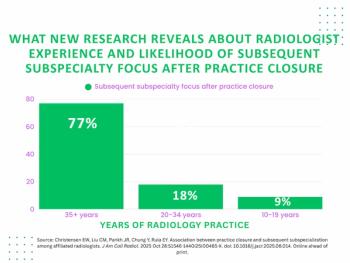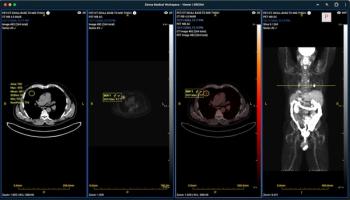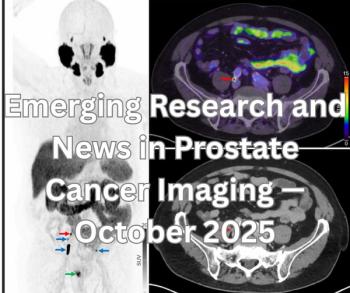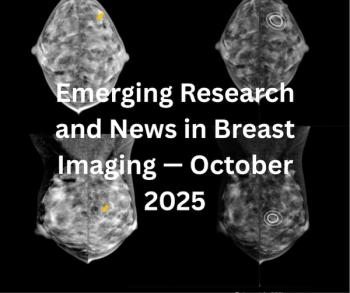
RSNA preview: Scientific sessions expand limits of imaging diagnosis and guidance
There is nothing like a little momentum to help the RSNA organizers present the latest developments in imaging research in the meeting’s scientific sessions. Everyone associated with imaging sciences from Beijing to New York City understands that presenting research in Chicago is an essential requirement for membership in this unique community.
There is nothing like a little momentum to help the RSNA organizers present the latest developments in imaging research in the meeting's scientific sessions. Everyone associated with imaging sciences from Beijing to New York City understands that presenting research in Chicago is an essential requirement for membership in this unique community.
More than 210 volunteers assigned to the RSNA's scientific program committee or its 16 organ-specific subcommittees evaluated 7052 submitted abstracts this year. About one of three submissions was accepted. According to scientific program chair Dr. Robert M. Quencer, 1803 papers and 729 posters were considered good enough for presentation at this year's show.
The RSNA has become a truly international conference, with an explosion of new research from China to accompany the substantial ongoing influence of researchers from Western Europe, Japan, and South Korea. North American researchers contributed 1100 accepted papers and posters, while scientific contributors elsewhere in the world were responsible for 1432.
Habitual attendees learn over time that a symbiotic relationship exists between technological innovations introduced at the RSNA meeting and the research discoveries described in this year's scientific sessions. Better hardware leads to new applications that, in turn, suggest more ways to improve equipment performance.
Multislice CT is currently the single most influential force in imaging research, according to Quencer, chair of radiology at the University of Miami in Florida. It is revolutionizing cardiac imaging, while presenting opportunities for enhancing nearly every application in the field.
Based on research presented at previous RSNA meetings, MSCT has become a fixture in trauma centers where perfusion CT is employed to evaluate stroke patients and guide therapy or whole-body CT surveys of trauma patients quickly assess the extent of their injuries. Research presented at meetings in the past three years has suggested that 64-slice CT angiography may help identify which chest pain patients in the ER should be admitted for observation and which can go home.
PET/CT has had a similar effect in oncology where the ability to diagnose and characterize the cellular metabolic rates of cancers has established an expanding role for the modality in the staging and restaging of cancers and as a surrogate marker for the response to therapy.
"All kinds of things are also happening in the field of image-guided therapy, such as radiofrequency ablation of tumors, whether they are predominately in the renal area or in the liver," Quencer said. "People are exploring the use of image-guided RF therapy in other organ systems as well."
Though practicing radiologists may resist the trend, research is increasingly demonstrating the value of quantification for assessing the severity and progress of disease. Standardized uptake values are an accepted measure for FDG-PET/CT research. The ability to quantify results with diffusion-weighted MR or MR spectroscopy is influencing the direction of research as well.
"It is going to be the future of radiology," Quencer said.
The same could be said for the influence of higher MRI field strength, 3D dynamic image presentation, computer-assisted diagnosis, labeled cell tracking, targeted probes for diagnosing dementia, image-guided RF ablation of liver lesions, the improved anatomic imaging of pancreatic disease, and radiation exposure measures.
Medical imaging progress moves along a broad front, and the latest developments are all on display, ready for discussion and dispute at the RSNA conference in Chicago.
Newsletter
Stay at the forefront of radiology with the Diagnostic Imaging newsletter, delivering the latest news, clinical insights, and imaging advancements for today’s radiologists.






























